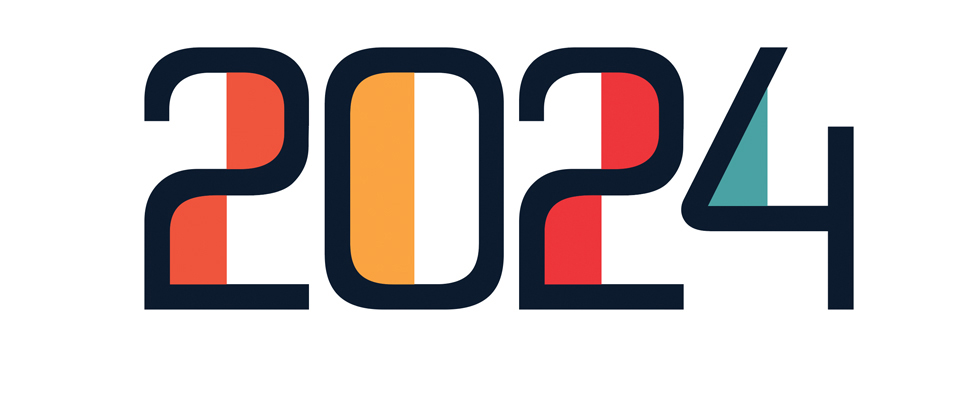Infrastructure as Code and Security – Five Ways to Improve Your Approach

Implementing IaC security processes will affect how teams work. For security,
it is another set of images that have to be tracked for potential
vulnerabilities, and changes flagged for remediation. For developers, these
changes can be another set of work alongside requests from the business and
other fixes that are needed. However, this can easily become a problem for
developers. Having to learn another set of tools to track issues or find the
list of problems will affect how developers work, making it harder to get issues
fixed. To solve this problem, security can integrate into developer workflows
and the tools that they use every day. Developers can automate security scans
using APIs from within their developer environments and integrate with the code
editors, Git repositories, and CI/CD tools to provide early visibility. These
results can then be fed into the developer workflow, flagging potential issues
that need to be fixed alongside other requests for work. Rather than being a
separate stream of work that developers have to consciously engage with,
security fixes to IaC should be treated just the same as other tasks.
Deconstructing Telemetry Pipelines: Streamlining Data Management For The Future

The primary objectives of telemetry pipelines are to reduce data clutter, add
context and save resources. Good data pipelines build multiple views into the
pipeline, organizing and contextualizing data from the get-go. By organizing and
labeling data, these pipelines make it easier to extract valuable information
from a single source of truth rather than combing through scattered data
puddles. Contextualization is the key. It involves tagging data with labels,
making it easier to group, filter and analyze as it moves through the
system. ... One of the significant issues that telemetry pipelines address
is the growing complexity of data management and the challenges posed by tool
sprawl. As more data sources are added to an organization's infrastructure and
tools multiply, the complexity becomes exponential. Managing this complexity,
validating assumptions and keeping data silos in check can become a significant
burden. When you’re not indexing correctly, you’re just paying for extra toil.
Telemetry data can come from various sources, not just machine data. This could
include things like sentiment analysis or even insights into how often somebody
uses particular buttons in their smart car.
8 change management questions every IT leader must answer

In the digital transformation era, IT success is no longer defined by meeting
a go-live date or keeping within a budget. It is determined by the creation of
shared vision and goals; achievement of leadership engagement and alignment;
broad buy-in and adoption of new systems, platforms, and processes; and
realization of business outcomes. ... CIOs must view change management as a
kind of GPS for transformation initiatives, designed to keep them on track
from the get-go. “If the change rationale isn’t clearly established and
communicated at the start, the whole initiative will be an uphill battle,”
says Jeanine L. Charlton, senior vice president and chief technology and
digital officer at Merchant’s Fleet, where she has been leading the charge to
rethink the way the 60-year-old fleet management firm operates. As IT leaders
ask their organizations to think differently about the way they do things and
adopt radically different alternatives, they must also rethink their own
approach to ushering in these changes.
Thinking in Systems: A Sociotechnical Approach to DevOps

The late philosopher Bernard Stiegler argued that technology is constitutive
of human cognition — that is, our use of tools and technology fundamentally
shapes our minds and our understanding of the world. That means that adopting
better tools improves the ways we think and work. Specifically, tools that map
the dizzying array of inputs and outputs within the organization help us to
reason through value chains and where we fit within it. This new breed of
tools uses directed acyclic graphs to capture your software infrastructure,
microservices, tests and jobs. Imagine you are a software developer in a big
organization that has thousands of developers. Your team owns an API that
controls the flow of widgets through time and space. Your API is used by
dozens of other teams, but you lack a sense of greater value, of place in the
overall system. How does your API result in business value? What are its
upstream and downstream dependencies? If your API were to disappear tomorrow,
what consequence would it have on the business? Tools like Garden capture a
map of value for software so teams like yours can, at any time, view their
part of the whole.
The evolution of multitenancy for cloud computing

The evolution of multitenancy in public cloud computing services will be
driven by advancements in container orchestration, edge computing, and
artificial intelligence. These technologies will further enhance the
capabilities of multitenant environments, such as using an edge system to
allocate some of the processing that is tasked to a multitenant
architecture, or leveraging AI to direct allocation. This will be much
better than the simple algorithms most are using today. As the complexity of
client requirements grows, public cloud providers will continue to invest in
refining multitenancy approaches. I suspect this will mean focusing on
workload isolation, data governance, and compliance management within shared
infrastructures. Also, the convergence of multitenancy with hybrid and
multicloud architectures will soon be a thing, even though multicloud is
already common. The idea will be to offer seamless integration and
interoperability across cloud environments, supporting the notion of
heterogeneity at the multitenant level and not at the application and data
levels, which is how things are done now.
Top 10 Software Architecture Patterns to Follow in 2024
Serverless architecture reduces the requirement for managing servers. It
allows developers to focus solely on writing code while cloud providers
manage the infrastructure. Serverless functions are event-driven and
executed in response to specific events or triggers. Serverless
architectures offer automatic scaling, reduced operational overhead, and
cost efficiency. Developers can focus on writing code without worrying about
server provisioning or maintenance. ... Event Sourcing is a pattern where
the state of an application is determined by a sequence of events rather
than the current state. Events are stored, and the application's state can
be reconstructed by replaying these events. Event Sourcing provides a full
audit trail of changes, enables temporal queries, and supports advanced
analytics. It is useful in scenarios where historical data tracking is
crucial. ... Event-driven architecture is centered around the concept of
events, where components communicate by producing and consuming events.
Events represent meaningful occurrences within a system and can trigger
actions in other parts of the application.
Data Management and Consolidation in the Integration of Corporate Information Systems
In the realm of corporate information systems, integration serves a crucial
role in improving how we handle and oversee data. This process involves
merging data from diverse sources into a single, coherent system, ensuring
that all users have access to the same, up-to-date information. The end goal
is to maintain data that is both accurate and consistent, which is essential
for making informed decisions. This task, known as data management and
consolidation, is not just about bringing data together; it's about ensuring
the data is reliable, readily available, and structured in a way that
supports the company's operations and strategic objectives. By consolidating
data, we aim to eradicate inconsistencies and redundancies, which not only
enhances the integrity of the data but also streamlines workflows and
analytics. It lays the groundwork for advanced data utilization techniques
such as predictive analytics, machine learning models, and real-time
decision-making support systems. Effective data management and consolidation
require the implementation of robust ETL processes, middleware solutions
like ESBs, and modern data platforms that support Event-driven
architectures.
Decoding The Taj Hotels’ Data Breach And India’s Growing Cybersecurity Battle

In simple terms, a social engineering attack uses psychological manipulation
to get access to sensitive data via human interactions. “Hackers research
LinkedIn and launch targeted attacks. They gather information about
employees and third-party contractors connected with the target organisation
and send phishing emails. All they need is an unsuspecting employee or a
contractor clicking the link. Then, a variety of innovative social
engineering actions follow, leading to APTs. The hackers end up harvesting
credentials to gain access to systems and applications,” Venkatramani
explained. In the hospitality sector, cyberattacks are predominantly fuelled
by a lack of password security hygiene, which encompasses issues such as
inadequate credential management, widespread password reuse across various
IT assets, insufficient controls on access authorisation, insecure sharing
methods like phone calls, neglect of embedded credentials in development
environments, and the disregard for essential practices like robust password
creation and regular rotation, Venkatramani added.
Website spoofing: risks, threats, and mitigation strategies for CIOs

Protecting the website and preventing users from falling prey to website
spoofing scams requires a multilayered approach whereby various methods and
procedures must be employed. Any points of vulnerability on the website must
be identified. The organization’s employees must be educated, raising their
awareness of scams like phishing attacks and brand impersonation so they
remain vigilant about potential attacks. In addition, the most effective way
of identifying and preventing spoofing attacks is by adopting the right
solution. Compliance, software updates, resolving issues, customer support,
and various other concerns will be handled as a third-party service provides
these services. ... In a world where technological progress can be exploited
for malicious purposes, safeguarding data emerges as the paramount goal for
any organization. With the right defense methods and tools, businesses can
confidently navigate the digital landscape, conducting day-to-day operations
without the looming fear of falling victim to the clandestine.
2024: The Year of Wicked Problems

If humans are displaced by the implementation of advanced analytics and
machine learning, which can provide equal or superior productivity, and
humans cannot evolve quickly enough (or at all), is there a societal social
net to fall back on? If the productivity gains centralize wealth at the top
of the economic landscape, does this result in mass unemployment and extreme
wealth inequality? How will this impact developed nations and developing
nations? These are the wicked problems that governments around the world
will have to tackle by identifying creative solutions that will have a
positive impact on society. In addition, will the extreme polarization of
political thinking further enhanced by advanced algorithmic information
sharing and prioritization preclude us from coming together in unity to
address these challenges in a timely manner? When addressing wicked problems
associated with society, there are often archaic laws and regulations that
hinder our ability to move fast and efficiently in the iterative design
thinking approach. Can these be changed rapidly enough to enable the
iterative approach to problem-solving that will allow us to address these
wicked problems?
Quote for the day:
"The road to success and the road to
failure are almost exactly the same." -- Colin R. Davis
No comments:
Post a Comment